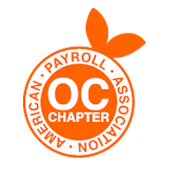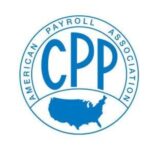
The payroll industry is dynamic and ever-changing. Each year, federal, state, and local legislative changes affect how payroll is administered. Payroll professionals must keep their knowledge up to date to avoid hefty noncompliance fines. Register for our program and let us help you advance your knowledge and prepare to take and pass the FPC or CPP certification exam this year! Our live, instructor led program prepares you for either exam and exam cost is included in our program fee. Program runs from 9am to 4pm and it’s virtual live.
Eligibility Requirements for FPC and CPP Examinations/Certification
There are no payroll experience requirements to take the FPC exam. However, to be eligible to sit for the CPP exam, the American Payroll Association (APA) requires that candidates meet specific payroll experience or educational criteria. See the links below for details on each certification option.
Fundamental Payroll Certification (FPC)
The FPC is a certification credential for those new to payroll and sales, service and support professionals. The exam is open to all those who wish to demonstrate a baseline of payroll competency. For more information visit: www.americanpayroll.org/certification
Certified Payroll Professional (CPP)
The CPP is a certification credential for experienced payroll professionals. To qualify for CPP certification, candidates at a minimum must have three years of payroll practice in the five years prior to taking the exam. For more information
visit: www.americanpayroll.org/certification
Prove Your Payroll Expertise
American Payroll Association’s payroll credentials, FPC and CPP, offer career growth, advancement, and recognition. Certification can help you:
- Increase your salary.
- Demonstrate your commitment to being an expert in the payroll field.
- Boost your confidence and recognition.
- Set you apart from colleagues and make you more valuable to your organization.
Program Details – What’s Included
- Learn from a knowledgeable instructor who provides expertise, insight and one-on-one guidance.
- Network, share experiences and discuss topics with a diverse group of payroll professionals.
- Stay on track toward earning your certification with a structured learning experience and instructor support.
- Program fee includes all books and actual CPP or FPC exam
- Gain 24/7 access to our online learning system designed to help you understand, apply, and engage with relevant payroll content and online exercises. Online modules are aligned with the FPC and CPP exams, and interactive study tools are available to test your knowledge, skills, and abilities are incorporated into the study process.
- Participants will receive a certificate of completion from the University of La Verne.
Scheduling Your Exam
For best results, we recommend scheduling your certification exam for a date that is after the end of our program. See details for our program and exam window. For more details on how to apply for your exam, visit www.americanpayroll.org/certification
ACTUAL VIRTUAL LIVE CLASS DATES AND TIMES
Saturdays – March 4th through April 8th
9am to 4pm
6 Sessions
The exam is offered in North America during the following windows:
Spring 2023
Registration: November 7, 2022 – April 14, 2023
Exam: January 9 – April 15, 2023
Fall 2023
Registration: July 5 – October 6, 2023
Exam: September 9 – October 7, 2023
Exams administered from September 10, 2022 through September 8, 2023, feature questions based on federal laws and regulations in effect as of January 1, 2022.
Exams administered from September 9, 2023 through September 7, 2024, feature questions based on federal laws and regulations in effect as of January 1, 2023.
Program Outline
Our comprehensive program provides participants with a solid understanding of advanced payroll topics necessary for payroll managers and supervisors responsible for their organization’s compliance. This program is ideal for experienced payroll professionals seeking compliance training, professional development, or CPP/FPC exam preparation.
Topics include the advanced study of:
- Payroll Concepts
- Calculations of Pay
- Calculations of Deductions and Net Pay
- Fringe Benefits and Other Payments
- Retirement Plans
- Cafeteria Plans
- Payroll Reporting and Employment Taxes
- Record Keeping and Payroll Practices
- Payroll Accounting and Audits
- Payroll Administration and Management
- Health Benefits
- International Payments
We look forward to working with you. For additional questions, please contact me at [email protected] or 909-225-7309. Thanks, Jaimie










